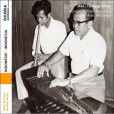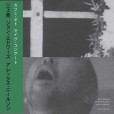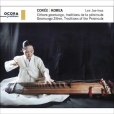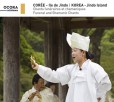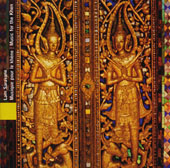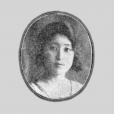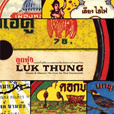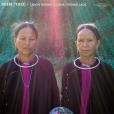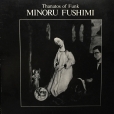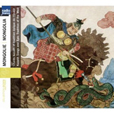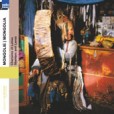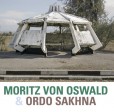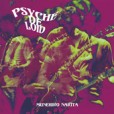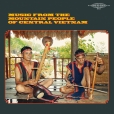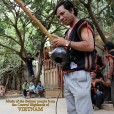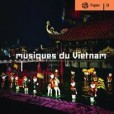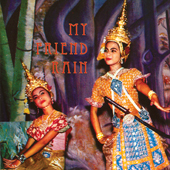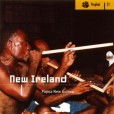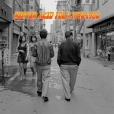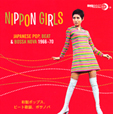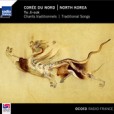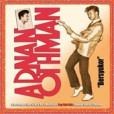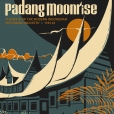Your basket is empty

Sublimely refined songs about broken hearts, dazzling landscapes and lost kingdoms, with zither and flute accompaniment.
‘The geomungo is a six-string zither with sixteen frets. The resonating board is made of paulownia wood. Its origins trace back to the ancient kingdom of Goguryeo (37 BCE to 668 CE), which dominated the territory of present-day North Korea and a large part of Manchuria.
‘The geomungo makes dramatic sounds, through the friction created by the plectrum striking the strings, or the rustling created by subtle movements of the left hand over the strings.
‘Here Lee Jae-hwa performs the suites Geomungo Hoesang and Geomungo Sanjo, in the respective styles of the south and north of the Korean peninsula: distinct forms, techniques and rhythms, with a shared subtlety, sensitivity and emotional power.’
A rare Saravane-style lam, beautifully sung by Nang Soubane Vongath, and with rocking, virtuoso mouth-organ, with sixteen or so reed pipes, a metre-or-more long.
Haunting, ravishing blends of western art song, blues and jazz with traditional and classical Japanese music. Wonderful.
A stunning survey of the 1970s heyday of this great Japanese singer and countercultural icon.
Deep-indigo, dead-of-night enka, folk and blues, inhaling Billie Holiday and Nina Simone down to the bone.
A traditional waltz abuts Nico-style incantation; defamiliarised versions of Oscar Brown Jr and Bessie Smith collide with big-band experiments alongside Shuji Terayama; a sitar-led psychedelic wig-out runs into a killer excursion in modal, spiritual jazz.
Existentialism and noir, mystery and allure, hurt and hauteur.
With excellent notes by Alan Cummings and the fabulous photographs of Hitoshi Jin Tamura.
Hotly recommended.
Rawly ethereal, other-worldly singing by members of hill tribes in China, Vietnam, and Laos.
Outsider electro-funk entirely self-produced, designed and distributed by Fushimi himself in 1985, featuring some deadly shamisen in amongst the drum machines and synths.
With a four-page insert including the hand-written comic which came with the original release, plus an English translation.
Bardic epics and nomadic songs, with dombra lute accompaniment.
A kind of intimate scrapbook of the startling collaboration between the techno maestro and this long-standing musical collective based in Bishkek, devoted to the roots music of Kyrgyzstan. Loose-leaved but balanced, lucid and intimate, it sets out from stunning a cappella and virtuosic komuz and kylak, mouth harp and traditional percussion: not field, but expert studio recordings, using marvellous vintage microphones, made over several days in Berlin. Further, a few of these are deftly treated by Moritz, using Reichian de-synced double-tracking, and discreet effects. Also two ten-minute dubs: a deadly, signature Berlin steppers, plus its version; and an echoing, mystical drum session, recorded live on stage in Bishkek. And a side-long, dream-like summation: the locomotive, oceanic, clangorous, dread Facets.
Ravishing, rooted, searching music; beautifully presented.
The king of acid-fuzz guitar presents a barbed bouquet of classic psych covers — The Stooges, Hendrix, Pink Floyd, MC5, Jefferson Airplane and co — with killer, piercing fuzz-wah guitar and bizarre software-generated vocals. ‘One of the finest acid-punk shredders to ever walk the planet, Munehiro Narita gives these time-honored psych rock classics a serious kick in the ass, in the most bizarre and Japanese of musical settings’ (Steve Krakow, Galactic Zoo). ‘Munehiro Narita (High Rise et al) bleeds all over a series of massively re-wired cover versions of classic psych while computer generated little girl vocals relocate the whole damn thing in another future altogether’ (David Keenan).
‘Dreamy musical segments, fleeting glimpses, odd sounds, temple shrines, decay, death, afternoon rains, and mysterious celebrations… from the Irrawaddy delta to humid nights on the streets of Isan province.’
Sexy and ardent, this is great fun.
The singer Yu Ji-suk, with a 10-piece ensemble of choir and percussion, performing the Seodo Sori repertoire of the north-west provinces. Nostalgic, dynamic folk songs, rooted in everyday life.
Charged, gritty, soulful pop yeh yeh from 1968-71, with backing by Malaysian legends like The Rhythm Boys, The Wanderers, The Flamingoes and The Falcons.
With a full-size, eight-page, colour booklet containing detailed biographical notes and Othman’s own rare photos.
